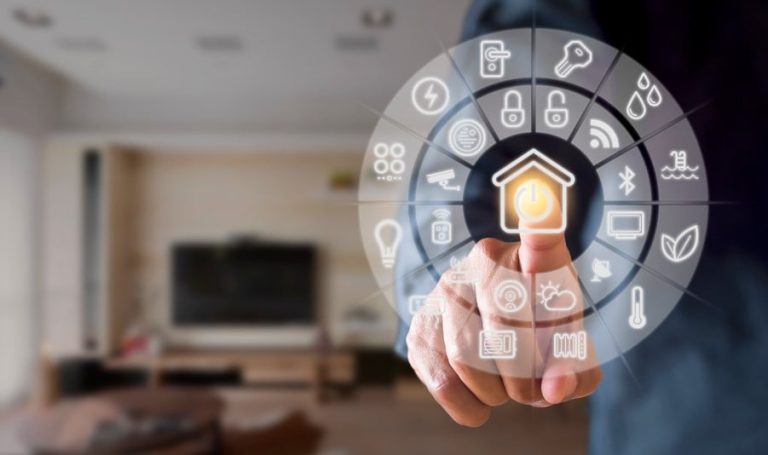The evolution of smart home technology relies on a key principle: interoperability. It's critical to ensure smart home IoT solutions comply with industry standards like Matter and Wi-Fi, and are compatible with public platforms like AWS and Azure. This approach ensures ease of use, promotes secure communications, improves energy efficiency, and broadens compatibility.
Industry standards like Matter and Wi-Fi form the backbone of the smart home ecosystem. Matter aims to establish a unified connectivity standard for various smart home devices. These standards enable seamless communication between devices, enabling a unified smart home environment where users can control multiple devices through a single platform.
Advancements in Matter and Thread come from the Matter interoperability standard and the Thread protocol. Matter 1.2 introduces new device types, improving interoperability and user experience. Thread enables direct communication between devices, enabling a seamless experience across product types and applications.
Today, IoT products with ultra-low power (ULP) Wi-Fi can achieve 2-4x better battery life, dramatically improving longevity while maintaining interoperability with existing access points in the home, and simplifying the installation and deployment of new IoT devices.
For example, Matter certified solutions using InnoPhase IoT's Wi-Fi platform enable rapid go-to-market with customized, interoperable IoT products for smart locks, smart lighting, access control, smoke detectors and air quality sensors.
The role of public platforms such as AWS and Azure is to provide robust cloud services that are essential for smart home IoT solutions. Leveraging these platforms enables advanced capabilities such as real-time monitoring, automated control, and predictive maintenance. Compatibility with these public platforms allows smart home devices to seamlessly integrate into a large ecosystem of connected services, which is essential for creating a consistent user experience.
AI at the sensor edge: Rapid advances in artificial intelligence open up new possibilities for the Matter-enabled smart home. Local AI computing at the edge eliminates the need to send data over the network for processing in the cloud. Instead, algorithms can leverage the data and computing power generated by devices to perform calculations close to where the data is collected.
Ultra-Low Power Wi-Fi: A Revolutionary Development
A major advancement in smart home technology is the emergence of ultra-low power (ULP) Wi-Fi capabilities. These advancements improve the battery life of IoT devices by 2-4x, significantly extending their lifespan. This breakthrough has a particular impact on battery-powered smart home devices such as sensors, locks, and alarms, where frequent battery changes can be a hassle.
Direct to Cloud: BLE and Zigbee devices require a gateway router to connect to the cloud over Wi-Fi/Ethernet. Direct to Cloud eliminates the need for a bridge/router if the device has integrated Wi-Fi and can connect directly using existing access points in the home. This direct to cloud connection simplifies installation and makes it easier to interoperate with the large number of access points deployed in a smart home.
Strengthening security measures remains paramount in the IoT space. Unsecured or poorly secured devices pose risks to the entire smart home network. Modern security technologies such as secure boot to alert users to BIOS compromises, on-chip crypto accelerators for secure data transfer, and support for secure protocols such as SSL/HTTPS help mitigate these risks.
InnoPhase IoT is a pioneer in ultra-low power Wi-Fi IoT solutions, providing products, SoCs, modules, and reference designs. For example, the Talaria TWO wireless platform features an embedded MCU, which offloads the Matter protocol and Wi-Fi network stack to the embedded ARM MCU, allowing IoT applications to operate efficiently without computing or memory constraints. InnoPhase IoT Application Development Kits work with silicon partners such as STMicroelectronics, Nuvoton, and Ingenic to help develop system-level power management.
Enabling seamless interoperability in the smart home is critical to establishing a unified, user-friendly environment. By choosing IoT solutions that adhere to industry standards and foster interoperability, consumers can enjoy improved ease of use, secure communications, energy efficiency, and broad compatibility. These principles will continue to drive innovation and improve smart home experiences around the world.
Deepal Mehta is senior director of marketing and business development at InnoPhase IoT.
Editor's note: Innophase IoT is one of 200 exhibitors in Booth 917 at Sensors Converge 2024, June 25-26 in Santa Clara. Join thousands of design engineers to tour Innophase IoT alongside other companies showcasing a wide range of sensor technologies, IoT, embedded and more. Conference sessions and keynotes will cover a wide range of topics including automotive technology, flexible MEMS sensors, women engineers and next-generation chip research. Register online and use code HAMBLEN to receive a free Expo Hall Pass or $200 off VIP and Conference Passes.

